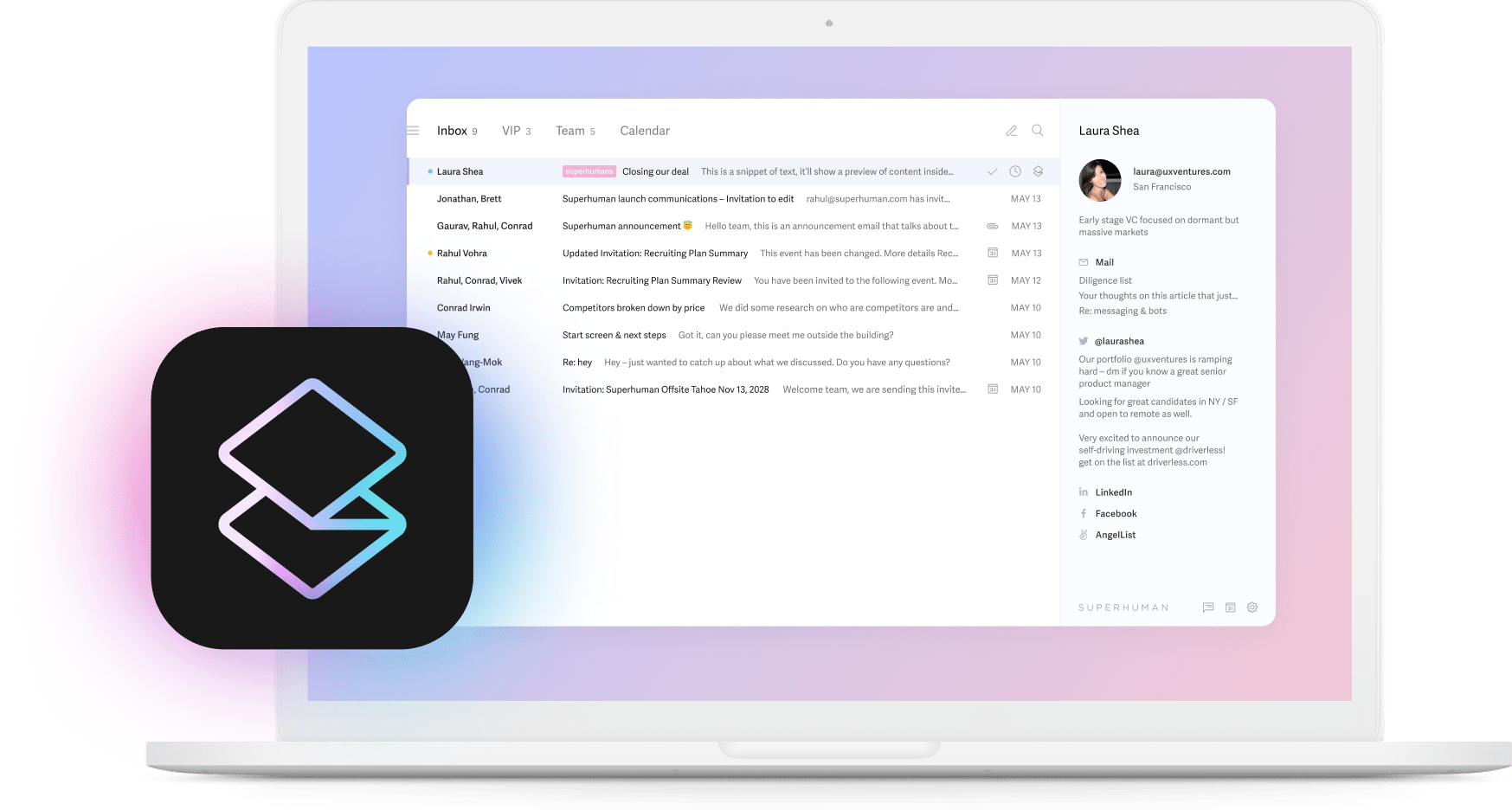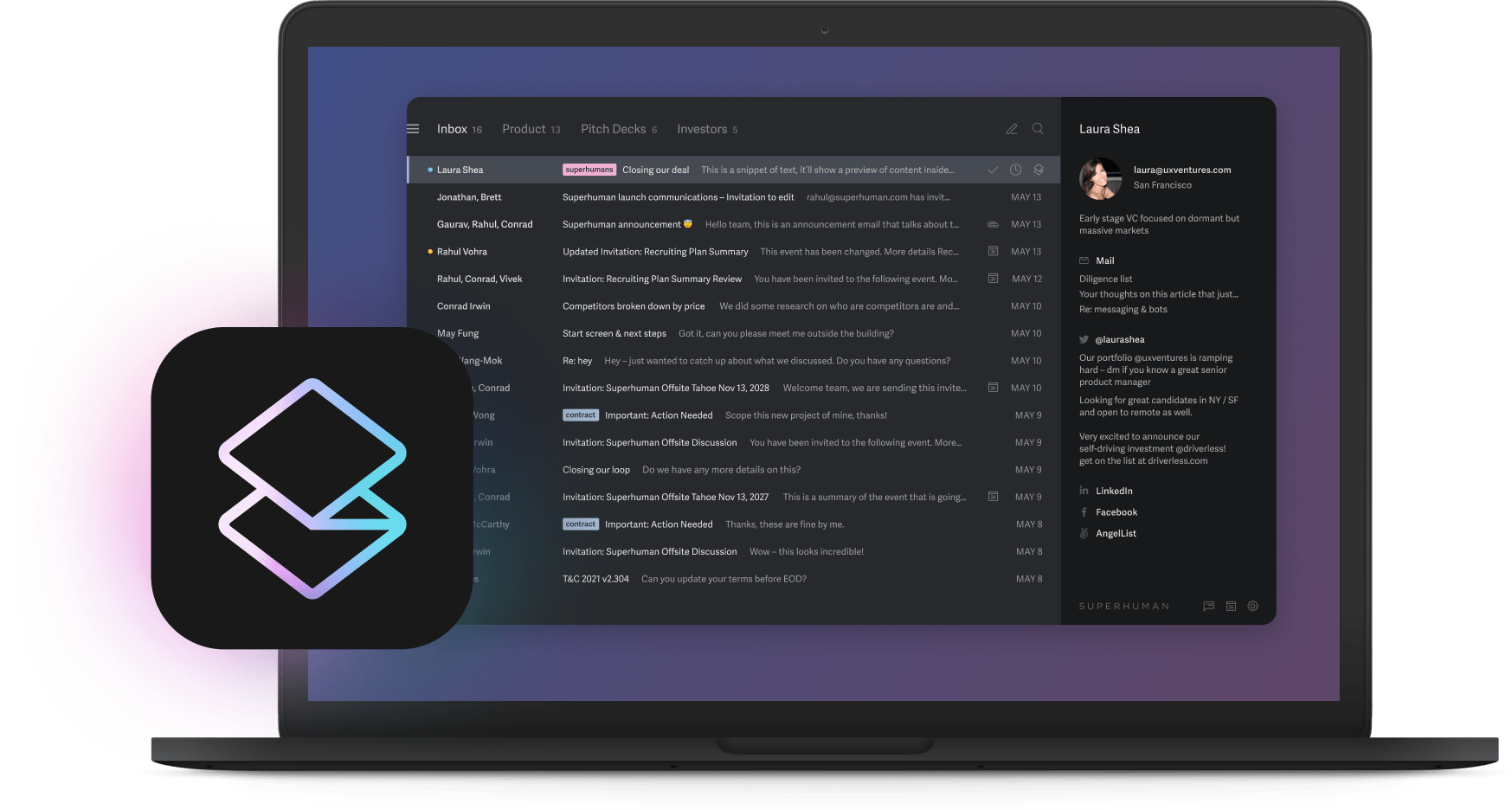
Your product manager sends an urgent question to three teammates. One's at home in their pajamas, another's in the office conference room, and the third is checking Slack between flights. Two hours later, all three respond with different answers. Your client gets confused. The deal stalls.
This isn't a communication problem. It's a hybrid work problem.
Recent global research shows that roughly 45% of workers now operate in a hybrid model, a decline from earlier years as more companies increase in-office expectations. You get flexibility and talent access, but you also get communication chaos. Messages get lost between Slack, email, and hallway conversations. Remote workers miss context from office discussions. In-office teams make decisions without including their remote colleagues.
Here's how to fix it.
Why hybrid team communication breaks down
Picture Tuesday morning at your company. Your engineering lead in San Francisco needs approval on a technical decision. She emails her VP at 9am Pacific. He's in New York, already deep in afternoon meetings. By the time he sees the email at 5pm his time, the San Francisco team has left for the day. The decision waits another 24 hours. The sprint gets delayed.
Meanwhile, your design team debates a homepage redesign in the office. They sketch ideas on the whiteboard and make a decision. Your remote designer finds out two days later when someone mentions it in Slack. She's frustrated nobody asked for her input on something she'll have to implement.
These scenarios repeat daily because hybrid work creates two separate experiences. Office workers get quick hallway answers and see body language in meetings. Remote workers wait hours for Slack responses and miss nonverbal cues on video calls.
The cost? McKinsey found that poor communication in hybrid teams leads to slower decision-making, duplicate work, and team members who feel disconnected from their colleagues.
Set clear communication protocols
Your team needs rules about where different conversations happen. Not suggestions. Actual protocols everyone follows.
Start by giving each communication channel a specific job:
Email handles:
- Client conversations and external stakeholder updates
- Project summaries and approval requests
- Policy updates and formal announcements
- Any communication requiring permanent records
Chat platforms work best for:
- Quick questions requiring fast clarification
- Real-time coordination on urgent issues
- Informal discussions and casual updates
- Sharing links and quick file transfers
Video calls manage:
- Complex discussions requiring back-and-forth
- Brainstorming sessions and creative work
- One-on-ones and team bonding
- Anything where tone and body language matter
Project management tools handle:
- Task assignment and progress tracking
- Deadline management and workflow coordination
- Visibility into who's working on what
Document these protocols in a shared guide. When someone joins your team, they'll know exactly where to find project updates (Asana), when to send an email versus a Slack message, and which meetings actually require attendance versus a recording.
Write down response expectations
A startup founder responds to every email within 15 minutes, including weekends. He never explicitly sets this expectation, but his team notices. Soon everyone feels pressure to match his responsiveness. People check email at 11pm. Burnout creeps in.
Define realistic response time expectations by urgency level:
- Critical (respond within 1 hour): System outages, client escalations, time-sensitive approvals blocking work
- High (respond same business day): Client questions, internal approvals, coordination on active projects
- Medium (respond within 24 hours): General questions, non-urgent requests, routine updates
- Low (respond within 48 hours): FYI messages, optional discussions, reference materials
Make these visible. Pin them in Slack. Include them in your onboarding docs. Reference them when someone sends a "URGENT" email about something that can wait until tomorrow.
When your remote developer in Berlin knows she doesn't need to respond to routine questions until her morning (which is your afternoon), she can actually disconnect. When your office-based sales rep knows client questions need same-day responses, he can prioritize accordingly.
Balance synchronous and asynchronous communication
A marketing team holds daily standup meetings at 9am Eastern. Perfect for the New York office. Terrible for the San Francisco remote workers joining at 6am. Worse for the London contractor finishing dinner at 2pm local time.
Stop defaulting to synchronous communication for everything. Most discussions don't need everyone present at the same time.
Use async communication for:
Project updates and status reports: Record a quick Loom video walking through your progress instead of scheduling a meeting. Your teammates can watch when it fits their schedule and leave timestamped comments on specific sections.
Decision documentation: When your team decides to pursue strategy A over strategy B, write down what you decided, who was involved, why you chose this approach, and what alternatives you considered. Share it asynchronously so people can review and comment without sitting in a meeting.
Brainstorming and feedback: Create a shared doc where people add ideas throughout the week. Your morning person contributes at 7am. Your night owl adds thoughts at 10pm. You get diverse input without forcing everyone into the same time slot.
Routine questions: Before scheduling a meeting to ask a question, try asking in your project management tool or Slack. You might get an answer in 20 minutes without pulling six people into a video call.
Save sync communication for:
Complex negotiations: When you're working through a difficult client situation or negotiating contract terms, you need real-time discussion to read tone and respond to concerns immediately.
Relationship building: Your new hire needs face time with their team to feel connected. Your client wants to see your face, not just read your emails.
Creative collaboration: Brainstorming a new product feature works better when people can build on each other's ideas in real time.
Conflict resolution: If tension exists between team members, handle it on a call where you can hear tone and see facial expressions. Don't let it fester in Slack messages.
Make meetings work for everyone
A VP schedules a strategy session for next Tuesday at 2pm. She sends a calendar invite. Half the team accepts. The other half? They're working from home that day and would rather not commute for a single meeting.
Hybrid meetings often create two tiers: engaged office attendees clustered around a conference table and forgotten remote participants staring at tiny video squares on a screen.
Fix the hybrid meeting experience:
Default to video-first, even in the office: When some attendees are remote, everyone joins the video call from their own laptop—even people sitting in the same office. This levels the playing field. Remote participants can see everyone equally, read the chat, and access the same screen sharing.
Assign a remote advocate: Designate someone to monitor the chat, ensure remote participants get heard, and pause in-office side conversations that exclude virtual attendees. Rotate this role so everyone understands the remote experience.
Share materials before the meeting: Send the agenda, slides, or documents at least 24 hours in advance. Remote attendees can review materials without struggling to read shared screens on small displays.
Record everything important: Make recordings available within an hour of the meeting ending. Include timestamps for key sections so people can jump to relevant parts. Your London team member who couldn't join at 11am Pacific can catch up that evening.
Use collaborative tools during meetings: Instead of sketching on a whiteboard visible only to office attendees, use Miro or Figma where everyone can contribute equally. The quiet remote developer might share better ideas through collaborative editing than by speaking up on a video call.
Reduce meeting overload
Employees who check in with their manager at least once per week are 2x more likely to trust their manager and 5x less likely to be disengaged. But "checking in" doesn't always require a meeting.
Try asynchronous check-ins for routine updates. Your sales rep records a two-minute video summarizing their pipeline. Your developer shares progress in Slack with a few bullet points. You respond with questions or encouragement without pulling everyone into a video call.
Reserve meetings for discussions that genuinely benefit from real-time interaction. Your calendar will thank you.
Build connection across locations
91% of employees like hybrid work, but 50% sometimes feel socially disconnected from colleagues. Your remote designer never grabs coffee with teammates. Your office-based product manager doesn't know your remote engineer's kids' names.
Connection doesn't happen accidentally in hybrid teams. You have to engineer it.
Create shared experiences
Virtual coffee chats: Pair random team members for 20-minute video calls to discuss anything except work. Your remote developer in Berlin learns that your office-based marketer in Chicago both love the same podcast. Small connections matter.
Quarterly in-person gatherings: Bring the whole team together for strategy sessions, team dinners, or offsite retreats. These concentrated periods of in-person time build relationships that sustain remote collaboration for months.
Hybrid-friendly team activities: Run virtual trivia nights where both remote and office attendees compete together. Share photos of your workspace or pets in a dedicated Slack channel. Celebrate team wins with recognition that reaches everyone equally.
Prevent proximity bias
Your remote employees face an invisible disadvantage. They're not in the office when you casually mention a new project in the hallway. They don't get invited to last-minute brainstorms. They miss the lunch conversation where someone shares crucial context.
Fight this by:
Documenting office discussions: After any important in-office conversation, share a quick summary in your team channel. What was discussed, what was decided, what happens next.
Including remote employees in spontaneous decisions: Before making a quick call in the office, ask "Should we loop in our remote teammates?" Most decisions can wait 30 minutes for async input.
Rotating meeting times: If you always schedule meetings for your office time zone, remote workers consistently join at inconvenient hours. Rotate meeting times so the burden of early/late calls gets distributed fairly.
Standardizing opportunities: Base promotions and development opportunities on skills and performance, not proximity to leadership. Your remote engineer shouldn't get passed over because they're not visible in the office.
Use the right tools for hybrid communication
Technology is the backbone of hybrid work. The wrong tools create friction. The right ones make distance irrelevant.
Essential hybrid communication tools:
Team messaging: Slack and Microsoft Teams keep conversations organized by channel. Your marketing team discusses campaigns in one channel, your engineering team debugs issues in another. Threaded conversations prevent important messages from drowning in noise.
Video conferencing: Zoom, Microsoft Teams, and Google Meet enable face-to-face communication across locations. Look for features like virtual backgrounds (so your remote workers don't worry about messy apartments), breakout rooms (for small group discussions), and live transcription (so people can follow along even with spotty audio).
Project management: Asana, Trello, and ClickUp give everyone visibility into who's working on what, when deadlines hit, and where projects stand. Your remote product manager can check task status without interrupting the developer who's deep in flow state.
Document collaboration: Google Workspace, Notion, and Microsoft 365 enable real-time editing, version control, and centralized knowledge repositories. Your team can collaborate on documents without emailing versions back and forth.
Email for external and formal communication: While chat handles quick internal questions, email remains essential for client communication, formal approvals, and creating permanent records. Superhuman Mail's Split Inbox automatically categorizes emails so client messages don't get buried alongside newsletters and notifications, helping teams respond 12 hours faster on average.
Integrate your tools
Your tools should work together, not create information silos. Connect Slack to Asana so task updates appear in relevant channels. Link your email to your CRM so customer conversations get automatically logged. Use Zapier or native integrations to reduce manual copy-pasting between systems.
When your sales rep receives a client email, it should automatically create a task in your project management system, notify the relevant team in Slack, and log the interaction in your CRM—without them touching any of it.
Monitor communication health
A product manager sends a project update email. Crickets. She doesn't know if her team read it, ignored it, or never received it because it got caught in spam filters. Three days later, someone asks a question the email already answered.
Visibility into communication health prevents these situations.
Superhuman Mail's Read Statuses shows when and on what device an email was read. When you send a time-sensitive request to your executive team and see that two of three executives have read it, you know to follow up specifically with the third person rather than sending blanket reminders.
Track what matters
Beyond individual message tracking, monitor broader communication patterns:
Response times by channel: How long does it take your team to respond to client emails versus internal Slack messages? If client emails consistently wait 48 hours, you have a prioritization problem.
Meeting attendance and engagement: Track which meetings people consistently skip or join late. Low attendance signals either poor meeting value or scheduling problems.
Information reach: When you share an important update, what percentage of your team actually sees it? If only 40% of employees read your strategy announcement, your communication channel isn't working.
Team sentiment: Regular pulse surveys reveal whether remote employees feel included in decisions, whether office workers feel overwhelmed by messages, and where communication friction exists.
Preserve decisions and context
Your product team debates whether to build feature A or feature B. Multiple emails fly back and forth. Someone suggests feature C. More discussion. The VP weighs in. An engineer raises concerns. Eventually you choose feature B with specific modifications.
Six months later, someone asks why you built feature B instead of feature A. The product manager who made the original decision has left the company. Nobody can find the email thread. The team reconstructs their thinking from vague memory.
When important decisions happen across email, Slack, and meetings, create simple decision logs:
- What was decided
- Who was involved
- Key alternatives considered
- Reasoning for the chosen approach
- Links to relevant conversations
Tools like Notion and Coda excel at creating these logs with links to external sources while remaining easily searchable. This preserved context prevents teams from relitigating resolved decisions or losing institutional knowledge when team members leave.
Document your communication norms
A new product manager joins your team. She doesn't know which Slack channels to join, when meetings require attendance versus optional, or whether "EOD" means 5pm in her time zone or her manager's time zone.
Transform your communication norms from implicit team culture into explicit documentation:
- Response time expectations by message urgency
- Which channels to use for different message types
- Meeting norms (cameras on/off, mute etiquette, recording policies)
- Email formatting and subject line conventions
- Escalation procedures for urgent issues
- Time zone considerations and working hours
Make these standards easily accessible and reference them during onboarding. Regular review helps teams adapt as work patterns change.
Making hybrid communication work
Hybrid work isn't going away. 80% of employees with remote-capable jobs expect to work hybrid or fully remote. Organizations that master hybrid team communication will attract top talent, move faster than competitors, and build stronger team cultures.
The difference between high-performing hybrid teams and struggling ones comes down to intentional communication practices. Define protocols. Balance sync and async. Make meetings inclusive. Use the right tools. Document decisions. Build connection.
When you treat communication as strategic infrastructure instead of leaving it to chance, your hybrid team stops feeling fragmented and starts feeling unified—regardless of where people work.






